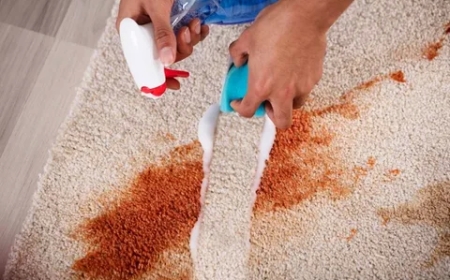5 Key Differences Between Blockboard and Plywood You Need to Know
Discover the 5 key differences between Blockboard vs Plywood. Learn their pros, cons, and ideal uses for your furniture and construction projects.
Choosing the right material for your furniture or construction projects is crucial. When it comes to Blockboard vs Plywood, understanding their differences can help you make an informed decision. Both materials have unique properties, benefits, and applications. In this article, we’ll discuss the five key differences between blockboard and plywood, helping you choose the perfect material for your needs.
What is a Blockboard?
A blockboard is a type of engineered wood consisting of a solid softwood core sandwiched between thin layers of plywood or veneer.
Key Features of Blockboard:
- Lightweight and easy to handle
- Resistant to warping and bending
- Smooth and uniform surface
Common Applications:
- Doors
- Shelves
- Tables
- Paneling
What is Plywood?
Plywood is made by gluing multiple layers of thin wood veneers together, ensuring strength and durability. The layers are arranged with grains running in alternate directions to enhance stability.
Key Features of Plywood:
- Strong and durable
- Versatile and customizable
- Resistant to splitting and cracking
Common Applications:
- Cabinets
- Furniture bases
- Roofing and flooring
- Formwork in Construction
Blockboard vs Plywood: 5 Key Differences
1. Composition and Structure
The primary difference between blockboard vs plywood lies in their composition.
| Aspect | Blockboard | Plywood |
|---|---|---|
| Core Material | Softwood blocks placed side by side | Multiple layers of wood veneers |
| Surface | Plywood or veneer covering | Uniform wood veneer layers |
| Density | Lightweight and less dense | Heavier and denser |
- The blockboard has a core made of softwood strips glued together, making it lighter.
- Plywood, on the other hand, uses multiple layers of veneers for a strong and stable structure.
2. Strength and Durability
When it comes to strength, plywood takes the lead.
- Plywood: Offers superior strength, making it suitable for heavy-duty furniture and construction.
- Blockboard: Though durable, it is not as strong as plywood. It works better for lightweight furniture.
Why Plywood is Stronger:
The cross-grain arrangement of veneers in plywood increases its tensile strength and prevents warping.
3. Weight and Ease of Handling
Weight is another crucial factor in the Blockboard vs Plywood comparison.
| Feature | Blockboard | Plywood |
|---|---|---|
| Weight | Lightweight | Heavier |
| Ease of Use | Easy to cut and handle | Requires effort |
- The blockboard is lightweight, making it easier to transport and install.
- Plywood is denser and heavier, but this weight contributes to its durability and stability.
For projects requiring easy handling, such as interior furniture or large doors, blockboard is the preferred option.
4. Resistance to Warping and Bending
Warping occurs when wood absorbs moisture, leading to uneven surfaces or bending.
- Blockboard: Resistant to warping, especially in larger pieces.
- Plywood: More prone to warping if not treated or sealed properly.
Why Blockboard Performs Better:
The solid softwood core in the blockboard prevents bending and makes it suitable for long panels like doors or tables.
However, high-quality plywood, especially moisture-resistant varieties, can overcome this drawback.
5. Cost and Affordability
Budget plays an essential role in selecting between blockboard vs plywood.
| Aspect | Blockboard | Plywood |
|---|---|---|
| Cost | More affordable | Relatively expensive |
| Value for Money | Best for lightweight use | Offers long-term durability |
- Blockboard is generally more budget-friendly, making it ideal for cost-sensitive projects.
- Plywood costs more due to its strength, durability, and versatility.
For heavy-duty furniture or construction, investing in plywood offers better value over time.
Blockboard vs Plywood: Which One Should You Choose?
Choosing between blockboard and plywood depends on your project requirements:
Choose Blockboard If:
- You need lightweight material for easy handling.
- Your project involves long panels, like doors and shelves.
- You want a cost-effective option without compromising quality.
Choose Plywood If:
- You need durable material for heavy-duty furniture or construction.
- The project requires moisture-resistant and strong material.
- You want versatility for shaping and customizing.
Comparison Table: Blockboard vs Plywood
| Criteria | Blockboard | Plywood |
|---|---|---|
| Core Material | Softwood strips | Multiple wood veneers |
| Strength | Moderate strength | High strength and durable |
| Weight | Lightweight | Heavy and sturdy |
| Warping Resistance | High (ideal for long panels) | Prone to warping if untreated |
| Cost | Affordable | More expensive |
| Best For | Doors, tables, and paneling | Cabinets, construction, furniture |
Pros and Cons of Blockboard
Pros:
- Lightweight and easy to handle
- Cost-effective
- Resistant to warping and bending
Cons:
- Lower strength compared to plywood
- Not ideal for moisture-prone areas
Pros and Cons of Plywood
Pros:
- Strong, durable, and versatile
- Resistant to cracking and splitting
- Suitable for both construction and furniture
Cons:
- Heavier and harder to handle
- Prone to warping without treatment
Conclusion
The Blockboard vs Plywood debate boils down to your project requirements. Blockboard is perfect for lightweight, cost-effective projects like doors, paneling, and shelves. On the other hand, plywood excels in strength, durability, and versatility, making it ideal for heavy furniture and construction work.
When choosing between the two, consider your budget, weight preferences, and durability needs. With a clear understanding of these differences, you can confidently select the right material for your project and ensure long-lasting results.
What Is The Main Difference Between Blockboard And Plywood?
Blockboard has a softwood core, making it lightweight, while plywood consists of multiple wood veneer layers, offering superior strength and durability.
Which Is Better For Doors: Blockboard Or Plywood?
Blockboard is better for doors because it is lightweight, resistant to warping, and easy to handle.
Can Plywood Be Used In Moisture-Prone Areas?
Yes, moisture-resistant or marine-grade plywood can be used in damp environments. It is ideal for kitchens, bathrooms, and outdoor projects.
Is a Blockboard Suitable For Heavy Furniture?
Blockboard is not as strong as plywood, so it’s better for lightweight furniture like shelves and paneling.
Which Is More Affordable: Blockboard Or Plywood?
Blockboard is generally more affordable than plywood. However, plywood offers better long-term value due to its durability.
What's Your Reaction?


























